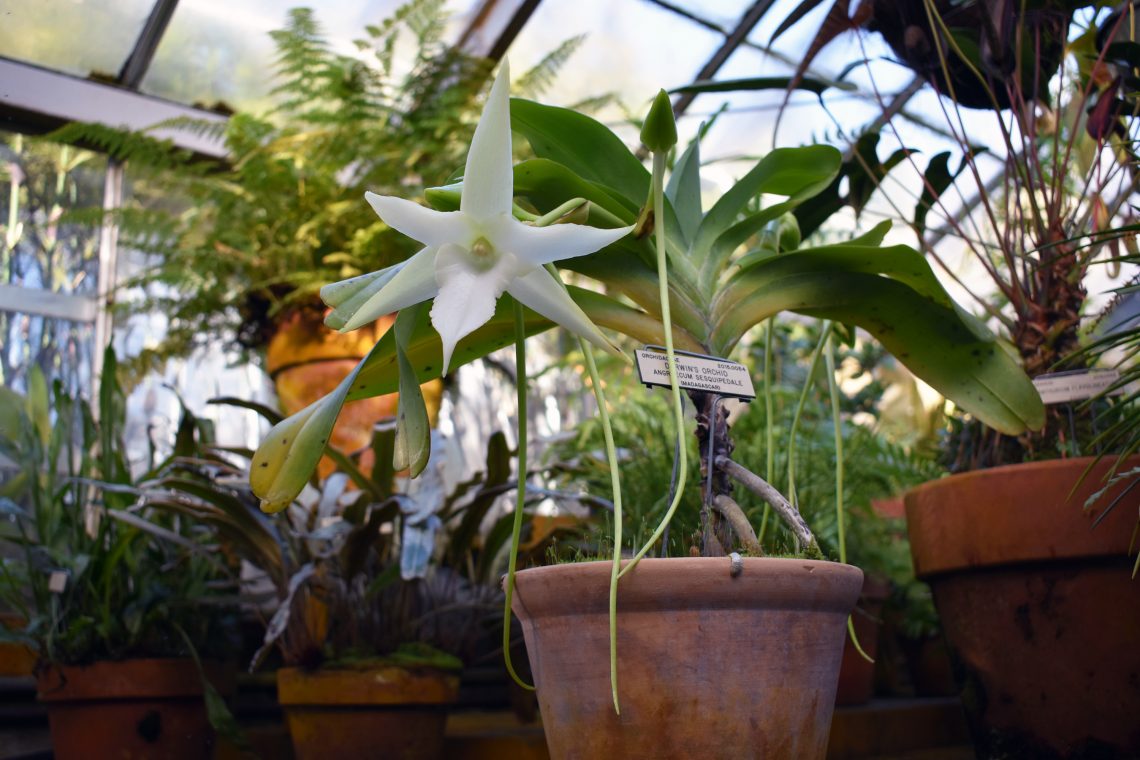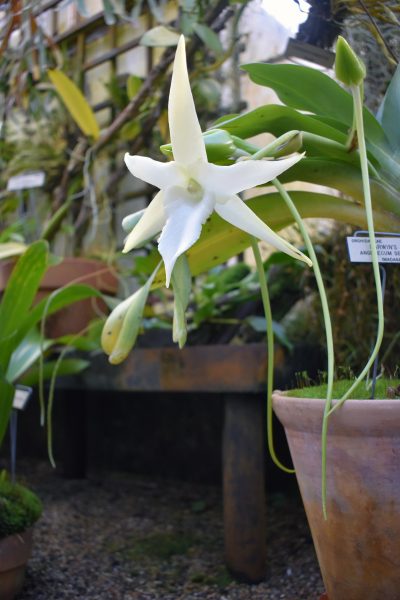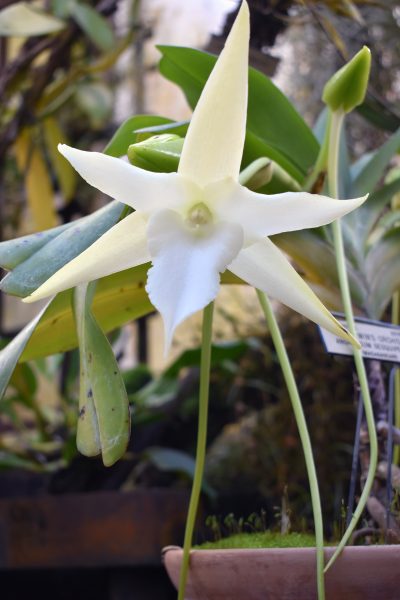
Dr. Lew Feldman, Garden Director
The genius of Charles Darwin was his ability to predict systems of interactions that take place in the natural world without seeing them for himself. One such case is the orchid plant Angraecum sesquipedale, commonly known as Darwin’s Orchid.
Darwin observed this orchid on an expedition to its native habitat in Madagascar. Fascinated by its extremely long nectar spur, Darwin postulated that this plant must be pollinated by a moth with a tongue (proboscis) long enough to reach the end of the flower spur. However, at the time, a moth with a 35 cm long proboscis was not believed to exist. It wasn’t until 21 years after Darwin’s death that the moth (Xanthopan morganii) was observed visiting the flowers of this species. Its tongue is indeed long enough to reach the nectar at the end of the floral tube. As the moth feeds on the nectar, its head touches the flower and collects pollen, ready to fertilize the next orchid it comes in contact with, furthering the evolutionary relationship between this moth and orchid.
Darwin’s birthday is Wednesday, February 12th, and the Essig Museum of Entomology on UC Berkeley’s campus is celebrating with behind-the-scenes tours from noon to 5 pm. The UC Botanical Garden will display Darwin’s Orchid as part of the celebration. Following, Darwin’s Orchid can be found with other flowering specimens in the Orchid, Fern and Carnivorous Plant House at the UC Botanical Garden at Berkeley beginning Friday, February 14th. We anticipate the flowers of Darwin’s Orchid will last just a few more weeks.


